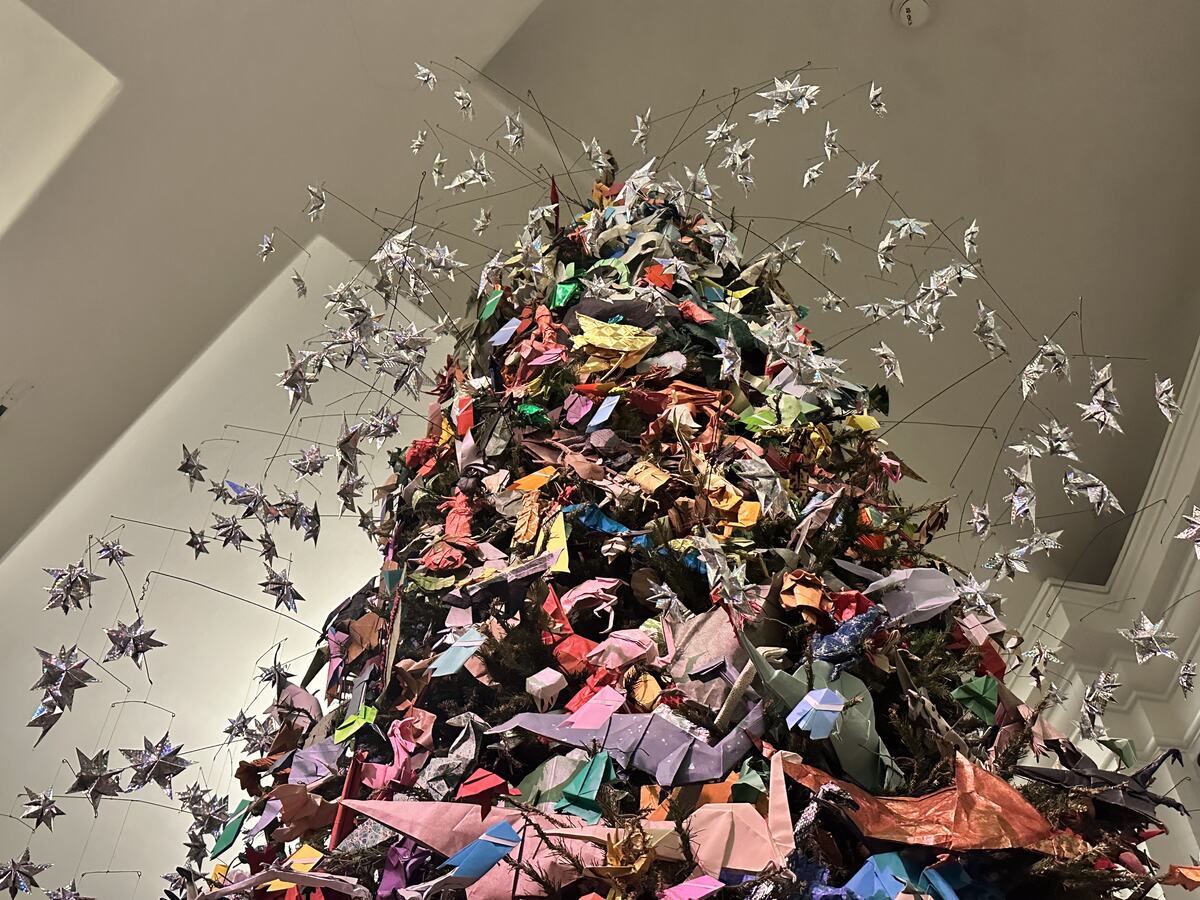
A tradition that dates back to the early 1970s, the American Museum of Natural History—working in partnership with OrigamiUSA—has once again transformed paper into intricate models of the animal kingdom for its annual holiday tree. Over 1,000 unique pieces will adorn the tree, which opens to the public on Monday, November 25, in the Ellen V. Futter Gallery. This year’s theme, Jumping for Joy, might leave you wondering: what’s perched on top? ILTUWS got a sneak peek during a recent visit to the museum.
Advertisement
“It’s the full marriage of math, science, and art,” said Rosalind Joyce, an OrigamiUSA member who has contributed her talents to the Origami Tree since the tradition began in 1972—with a 25-foot tree. She highlighted the geometry involved in making bisecting, trisecting, or diagonal folds, as well as the scientific aspects of the various animals featured—many of which are inspired by the museum’s exhibits.
Joyce also explained the intricacies of the “wet fold” technique, noting that different types of paper have unique textures and thicknesses that can make them prone to breaking or losing their shape. “But if you wet the fibers and hold it there and let it dry, it stays,” she said. The wet fold also allows her to bend and sculpt pieces into three-dimensional forms or add small details like appendages. Pins, wires, or clips are then used to hold the shapes in place as they dry overnight. If this sounds intriguing, the museum and OragamiUSA are hosting a Special Folding Fun Session on December 8.
The tree now stands 13 feet high, reaching all the way up to the ceiling of the Ellen V. Futter Gallery. This year’s theme, Jumping for Joy, pays tribute to the 2024 calendar leap year. “This year’s tree will celebrate the many animals with a particular prowess that sets them apart—hopping, jumping, and leaping,” wrote the AMNH in an e-mail to ILTUWS. Featured animals include rabbits, grasshoppers, frogs, squirrels, porpoises, whales, the newly-discovered leaping leech, and cicadas, two broods of which emerged together this year for the first time since 1803. Also on display will be models depicting iconic Museum exhibits like the blue whale and tyrannosaurus rex.
Joyce also clued us in on some special pieces, or “Easter eggs” you can find on the tree. When we pointed to a monkey reading the book Little Orphan Annie, Joyce told us that every year, the monkey is reading a different book. It all started when Joyce’s son approached her at home and said, “Yo, Mom, I read this book and it says we developed from monkeys because we were eating psychedelic mushrooms.” You’ll notice the origami psychedelic mushrooms around the monkey on the tree. “Once he said that, every year for the last 10 to 15 years, I get my monkey (chimp), and a friend of mine makes the [origami] book, and we decide on a title. One year, the book was To Serve Man, a nod to the Twilight Zone movie. Our minds were indeed blown away by this factoid, and we look forward to uncovering more.
Advertisement
Topping the tree this year is a beautiful kangaroo. The group, who’s been assembling the tree for the past three weeks, collaborated on the decision. While a star is sometimes placed on top, fear not—lots of lovely little stars can be seen hanging throughout the tree. Pictures don’t do it justice—you definitely need to see it in person.

Happy Holidays!
Have a news tip? Send it to us here!

